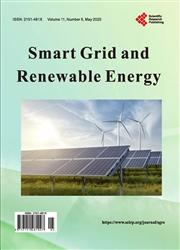Modeling of Series Resonant Converter in Synchronous Rotating Frame
引用次数: 0
Abstract
Small signal model of PWM converters are derived from averaging method. In the case of resonant converters, the averaging method fails because tank currents and voltages have no dc component. Moreover, the phenomenon of “beat frequency dynamics” is not addressed in averaging method. Although numerous modeling techniques are presented in literature to model resonant converter; they are either with complicated math or involves complex numerical computation. The state trajectories of resonant converter exhibits rotating behaviour and are analysed using Fundamental Harmonic Approximation (FHA). This paper proposes a simple and straight-forward modeling technique for Series Resonant Converter (SRC) in synchronous rotating d-q frame. The FHA circuit of SRC is analysed in d-q frame where the alternating state variables becomes dc. The derived equivalent circuit of SRC in d-q frame is able to capture the large signal behaviour of the converter. Subsequent perturbation and linearization of the equivalent circuit model in d-q around an equilibrium point yields us the small signal model of SRC. The proposed small signal model of SRC is able to capture “beat frequency dynamics”. Frequency response characteristics of small signal control to output, input to output, input admittance and output impedance are compared with the switching converter plots and are in close agreements. The proposed small signal circuit of SRC is analytically solved and control to output transfer function is derived.同步旋转机架串联谐振变换器的建模
采用平均法建立了PWM变换器的小信号模型。在谐振变换器的情况下,平均方法失败,因为槽电流和电压没有直流分量。此外,在平均方法中没有解决“拍频动态”现象。虽然文献中提出了许多建模技术来模拟谐振变换器;它们要么涉及复杂的数学,要么涉及复杂的数值计算。谐振变换器的状态轨迹表现出旋转特性,并利用基谐波近似(FHA)对其进行了分析。本文提出了一种简单直接的同步旋转d-q框架串联谐振变换器(SRC)建模技术。在交变状态变量变为直流电的d-q框架下分析了SRC的FHA电路。在d-q帧中导出的等效电路能够捕获转换器的大信号行为。随后对d-q中围绕平衡点的等效电路模型进行扰动和线性化,得到SRC的小信号模型。提出的SRC小信号模型能够捕捉“拍频动态”。将小信号控制对输出、输入对输出、输入导纳和输出阻抗的频率响应特性与开关变换器图进行了比较,结果非常吻合。对所提出的小信号电路进行了解析求解,并推导了控制输出传递函数。
本文章由计算机程序翻译,如有差异,请以英文原文为准。
求助全文
约1分钟内获得全文
求助全文

 求助内容:
求助内容: 应助结果提醒方式:
应助结果提醒方式:


